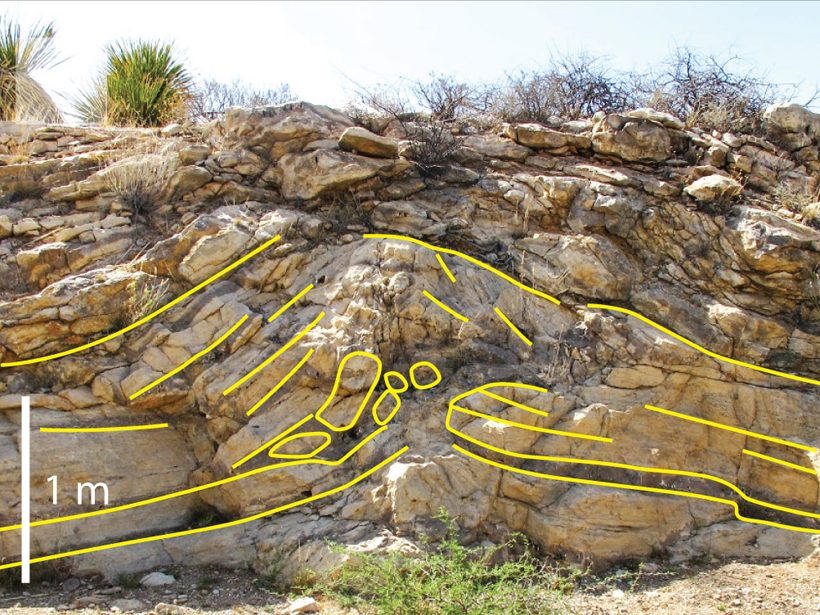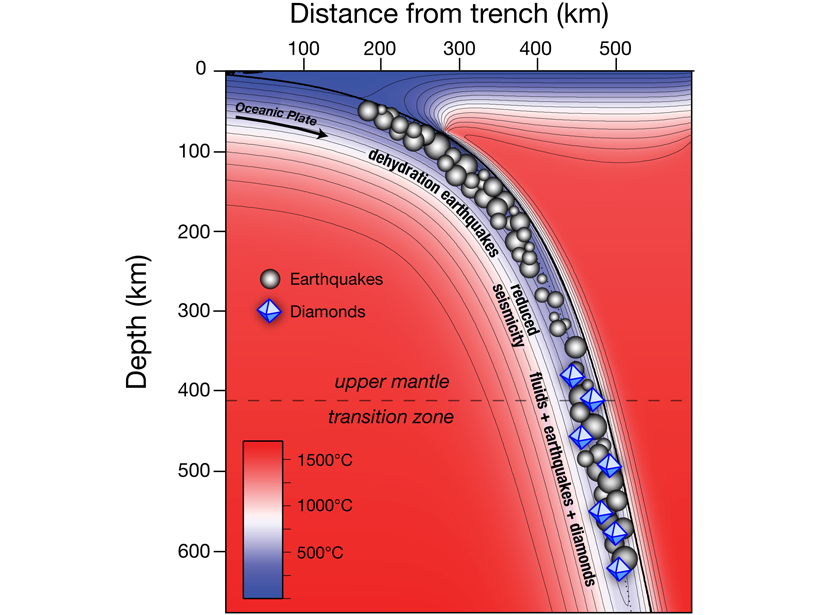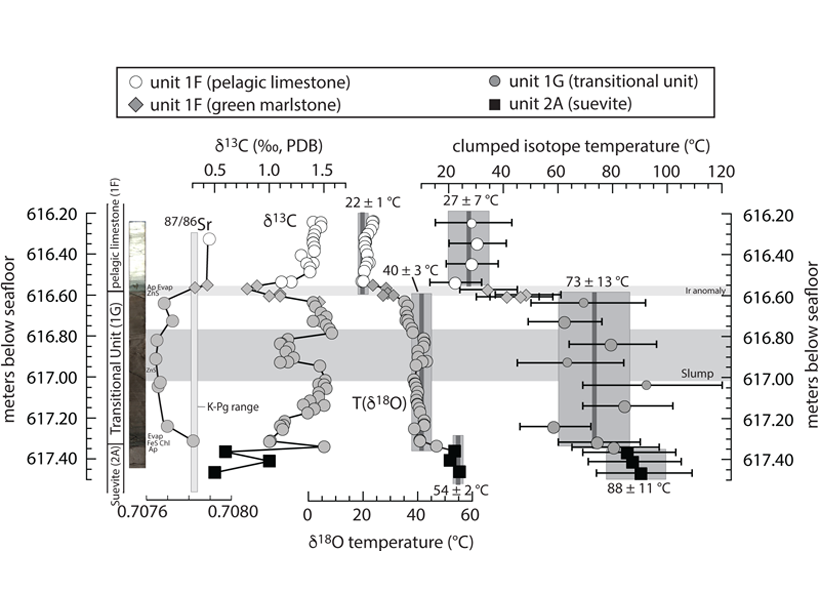Sedimentary structures from evaporative coastal environments indicate carbonate saturation, offer insight in mid-Mesozoic ocean chemistry and potentially even earlier times.
V. Salters
Posted inEditors' Highlights
Diamonds Are at Fault
Deep-seated earthquakes in subduction zones are related to diamond formation.
Posted inEditors' Highlights
Watering Down the Mantle
The cooling of planet Earth over time increased the water carrying capacity of the mantle and could have shrunk the oceans.
Posted inEditors' Highlights
Life in the Chicxulub Crater Years After It Was Formed
While the seas were still churning from the impact and the seawater temperatures were high due to the hydrothermal activity, life was reestablishing itself inside the crater.
Posted inAGU News
AGU Advances Goes Online
Featuring high-impact papers and a streamlined process, AGU’s new journal is ready to launch.





